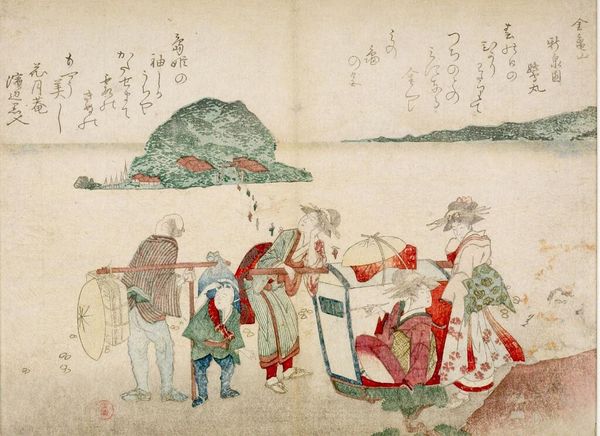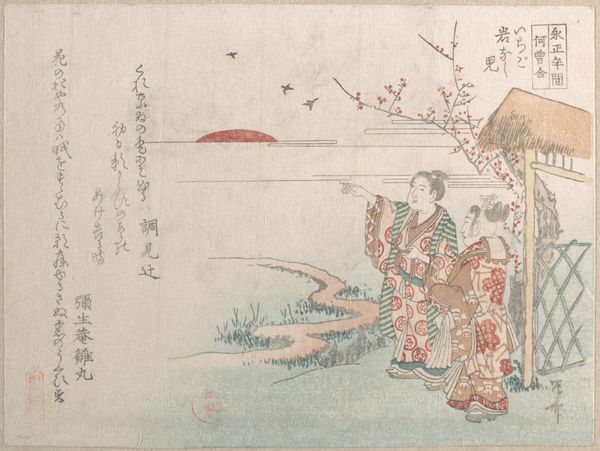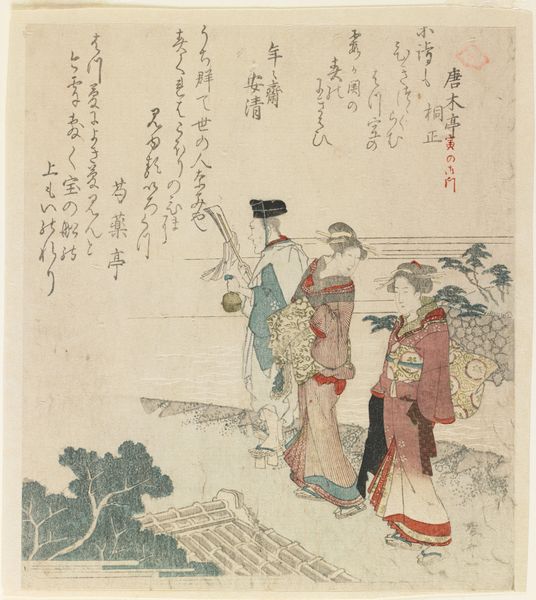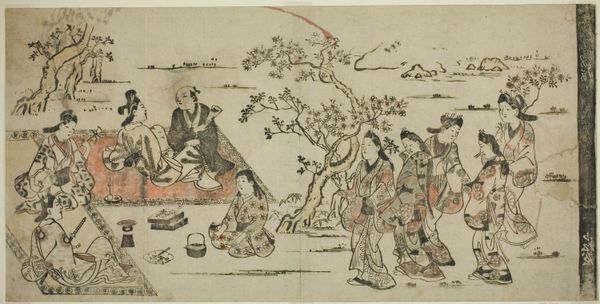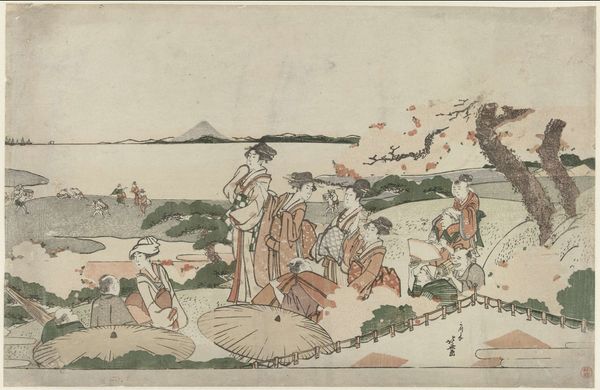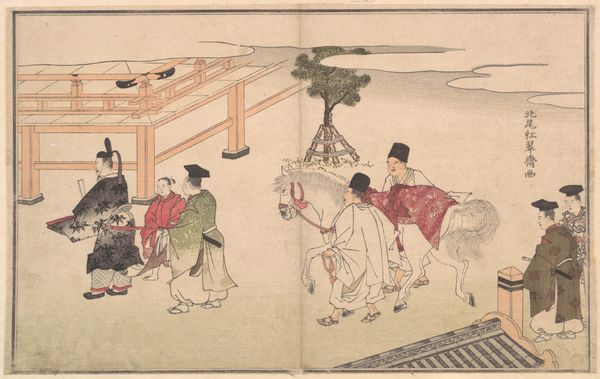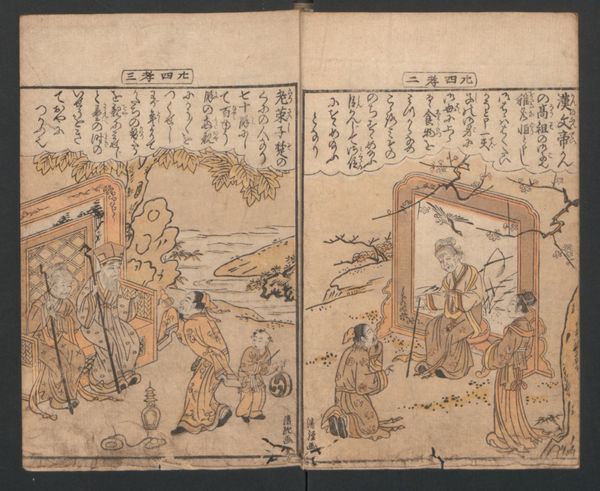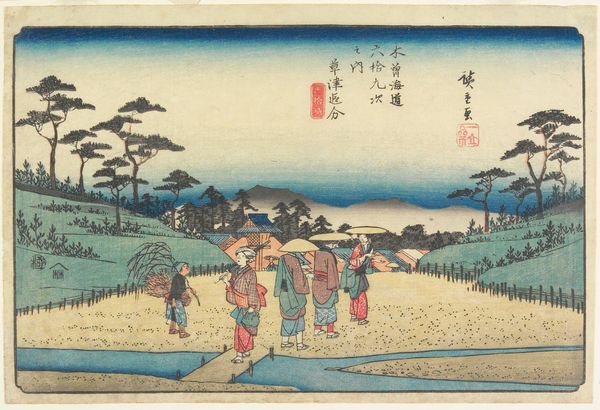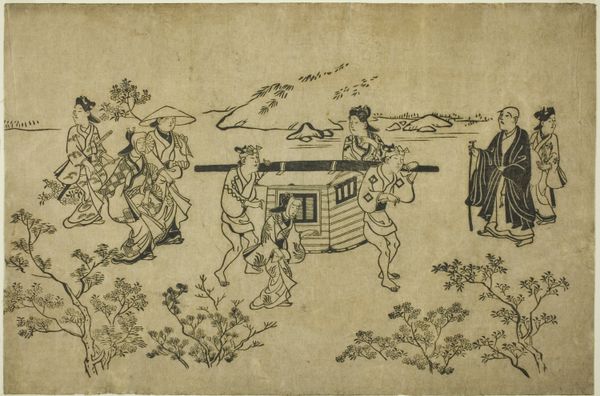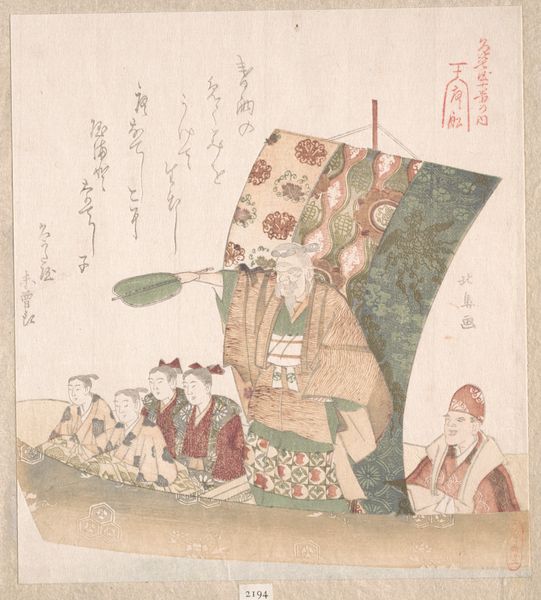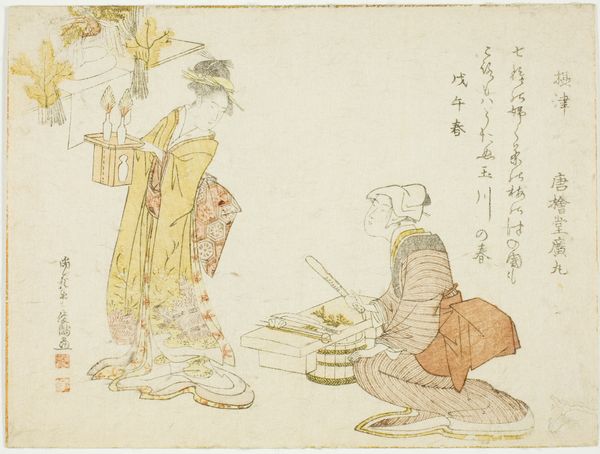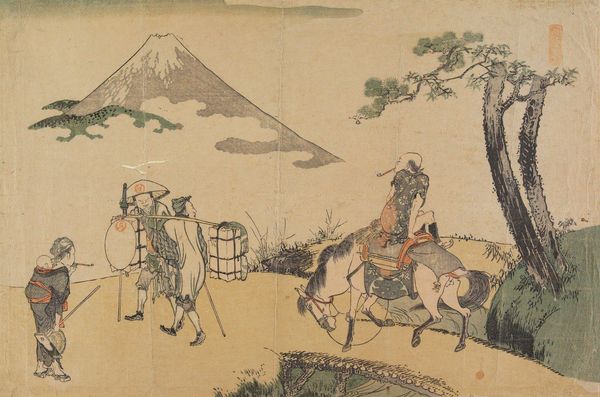
Visitors to Enoshima, from the album "Mountains of the Four Quarters (Yomo no yama)" c. early 19th century
0:00
0:00
painting, print, watercolor
#
water colours
#
painting
# print
#
asian-art
#
landscape
#
ukiyo-e
#
japan
#
figuration
#
watercolor
Dimensions: 20.2 × 27.9 cm
Copyright: Public Domain
Editor: Here we have Kubo Shunman’s "Visitors to Enoshima, from the album 'Mountains of the Four Quarters (Yomo no yama)'," likely made in the early 19th century using watercolor. It shows people travelling, seemingly enjoying a day trip. I am curious about the landscape elements. What do you see in this piece, especially regarding the way the scenery and figures relate? Curator: What I immediately note is how this work highlights the commodification of leisure. The very act of visiting Enoshima is made possible by a system of labor. Note the figures carrying the palanquin, their striped garments suggesting a class distinction from the relaxed passengers inside. The print medium itself broadens accessibility. Think about who could afford such travel versus who could acquire and appreciate this artwork reproducing that experience. Editor: So, you're saying the print isn’t just depicting a scene, but also participating in the social structure it shows? How does that change our understanding of landscape art here? Curator: Precisely. The landscape is not merely a backdrop, but part of a carefully constructed tableau that involves processes of travel, labor, and class. Shunman’s choices about what to depict, and the materials with which to depict it – affordable printing techniques – reflect and reinforce those hierarchies. The picturesque island becomes another consumer product, mediated through the act of viewing the print. Consider the source and the means by which art is created, not merely what it represents. Editor: That is very interesting! Now, looking at this artwork I wonder what would it have meant for people at that time to look at such scenes. Thank you! Curator: Indeed. Looking through a materialist lens invites us to analyze how the image operates within economic and social systems of production and consumption. Hopefully this has broadened your horizons.
Comments
No comments
Be the first to comment and join the conversation on the ultimate creative platform.
